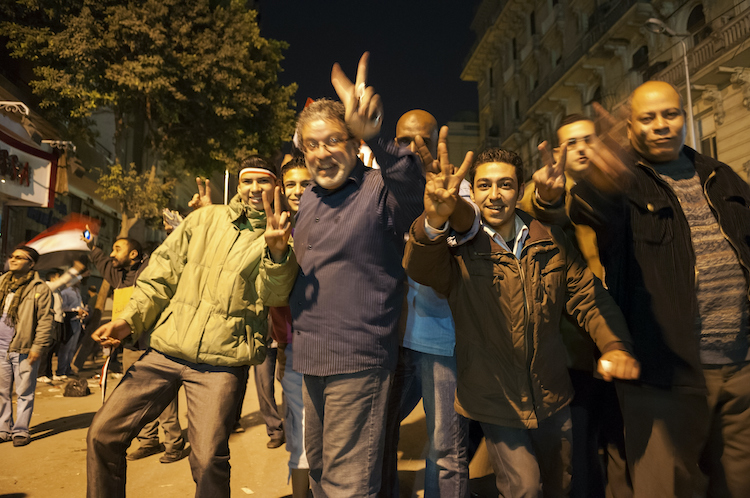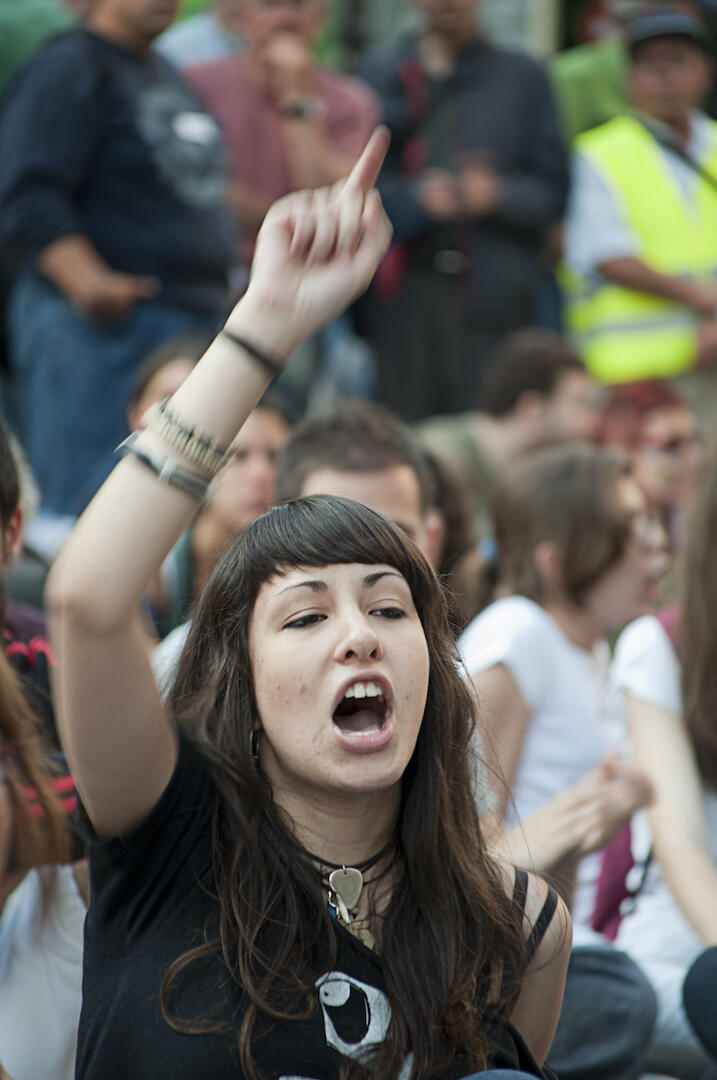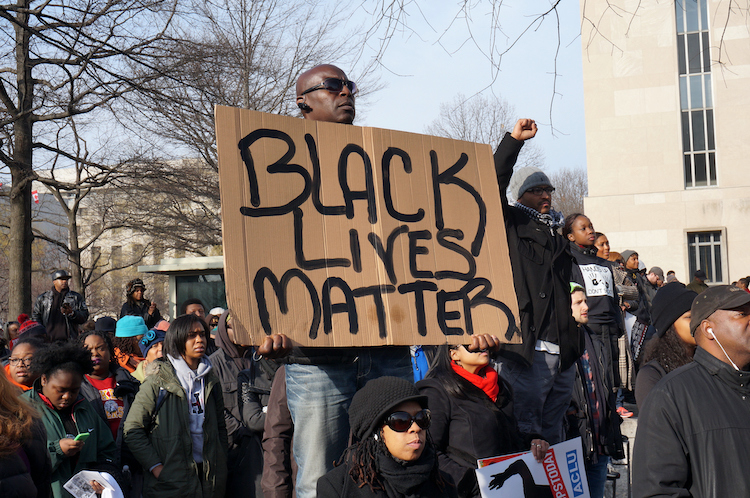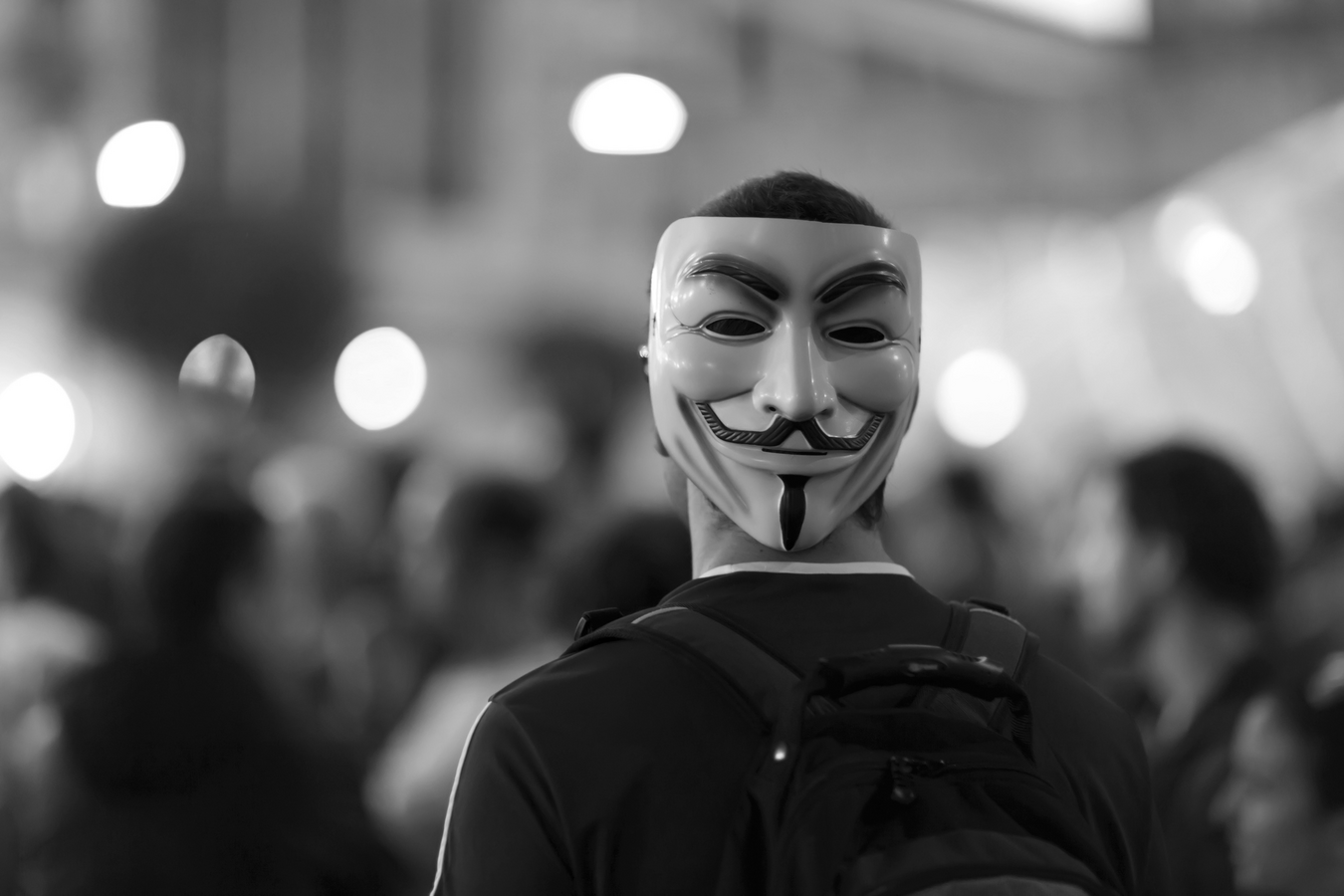Allow me to tell you a story about stories—about how stories can change the world and how they can get in the way. It centers on a story first told a decade ago, in early 2011. This is a story about revolution and war, triumph and catastrophe, and it is also about what we have been up to over the past 10 years with our time and attention, our hope and our heartbreak.
This very big story was set in motion on Dec. 17, 2010, when a 26-year-old Tunisian street vendor named Mohamed Bouazizi set himself on fire, fed up with police and bureaucratic harassment as he tried to make a living. His experience was particular but not unique, and it moved others to action. While he lay in the hospital dying, protests spread from his hometown of Sidi Bouzid to the capital of Tunis, and they would not go away. Day after day, people flooded the streets and shut down the country, demanding the fall of the regime of President Zine el-Abidine Ben Ali, who had ruled the country since 1987. On a visit there years earlier, I saw his photograph looking down from the walls of every tiny shop and from the billboards above them. On Jan. 14, 2011, the president and his family fled the country. His omnipresent rule ended.

Just over a week later, on Jan. 25, a cry rang out in Egypt. It was National Police Day, and political opposition groups planned a protest in Cairo, as they had done in years past on the legal holiday. But this time the cry spread, particularly on a Facebook page called “We Are All Khaled Said,” memorializing a man beaten to death by police outside an internet cafe the previous June—a man in his 20s, like Mr. Bouazizi. Thousands poured into Cairo’s central Tahrir Square, and they would not go away. They held mass meetings and set up kitchens for themselves and swept the square in ritual cleanings; they were shot at by police and assaulted by thugs on camels. Eighteen days later, on Feb. 11, the regime fell. Hosni Mubarak, after holding power since 1981, had resigned.
By then the story was out in the world. It was loose. Its arc went something like this: A cry rings out. People take the squares. The regime falls.
The story was simple and clear, and in the span of two months, it had worked twice. A cry rings out, people take the squares, the regime falls. The promise of the story spread across the Arab world: to Jordan and Yemen and Sudan, Bahrain and Libya and Morocco. Then Syria.
The story was simple and clear. A cry rings out, people take the squares, the regime falls.
Today, some of those countries remain the intransigent monarchies that they were then, perhaps with a few constitutional tweaks. Some of those names cannot be said without a wince because they have been infernos of death and are still smoldering. But in early 2011, they were places of popular awakening, of an “Arab Spring,” of chants and banners and marches and promise. The people demand the fall of the regime! Ash-shab yurid isqat an-nizam!
But it was not only the Arabs who took action that year. In the United States, starting on Feb. 14, protesters occupied the Wisconsin state capitol building in Madison, opposing an anti-union bill that Gov. Scott Walker was poised to sign. The mobilization went far beyond the scripted rallies that unions can usually muster. State government workers and their allies interrupted the business of government, and Egyptians called in pizza orders for the protesters in Madison. Gov. Walker was no decades-long dictator; the protesters’ demands were not the same, but the story that activated them was.

Then in Greece, starting on May 5, long-simmering protests over economic hardship exploded into riots, occupations and strikes. In Spain, a one-day protest in Madrid planned for May 15 became a weeks-long occupation. There, again, the regime was not a particular autocrat so much as the economic hardship and government budget cuts following the 2008 global financial crisis, which had begun with the bursting of the U.S. housing market. But still a cry rang out, and people took the squares.
There were certain aspects that attached to the story wherever it went. There were guerrilla libraries of books and tracts, “Anonymous” masks and music. The protesters said they had no leaders; when the media or police tried to identify some, those people, too, would claim they represented nobody but themselves. Decisions happened in open assemblies or in small groups of friends. Protesters would not identify their movements with any political party or faction; they were at once individuals and an undifferentiated mass. They shared no single ideology. It was as if all such organizational forms were from a world now passing away.
Why 2011?
What was happening? Why was this fire spreading around the world? There were several popular explanations at the time.
One was social media. Protesters from Cairo to Athens had Facebook logos on their signs. Particularly under repressive regimes, social media was fresh air. Messages that could never pass through state-controlled broadcasters now spread from person to person, country to country. Silicon Valley executives reveled in their new role as liberators.
Yet so much of the strength of these uprisings was in physical presence and tenacity—enduring the assaults-by-camel, sleeping under the sky and cleaning up afterward, provoking workplace strikes. The protesters were not mere clicktivists. Besides, revolutionary fevers had spread long before the internet. Think of 1989, 1968, 1848 and 1789.
Another theory was that economic conditions had reached a breaking point. Food prices in Egypt were peaking, for instance. But that was only a local explanation. In many places, the 2008 recession had already bottomed out, and things were slowly beginning to look up. Austerity did not feel in Spain the same as it did in Greece. In each place, the protests had their own mix of circumstances, and yet the protests were so much in unison.
So much of the strength of these uprisings was in physical presence and tenacity. The protesters were not mere clicktivists.
Both those explanations, anyway, stink of determinism—of outside, mechanistic forces compelling human beings to act. To whom do our stories grant agency? To Silicon Valley? To the gross domestic product?
The chants spread around the world that year told a different tale: We! The people! Have found our voice! By this account, the agency was with the protesters. They had found a common method for making themselves heard, and they were putting it to use. Their discovery traveled everywhere people felt they needed it.
There is a word for bite-sized bits of culture that spread on the internet: “meme.” It comes from Richard Dawkins’s 1976 book The Selfish Gene, which argues that the real action in evolutionary biology lies in the competition of genes—and, in culture, the competition of memes. Each of us, all we know and love, are just dust stirred up from the combat among the genetic material in us and the memes cycling through our networks.
The best explanation I can find for the dangerous magic that happened in 2011 is also the simplest, and maybe the least satisfying: the story itself, told and retold by the people who tried to live it out.
Is the story of 2011 a meme? I cannot let myself call it that. I say “story” because stories seem to retain some space for the assent of people, who must not only share but also retell and adapt and inhabit them.
Ten years later, the best explanation I can find for the dangerous magic that happened in 2011 is also the simplest, and maybe the least satisfying: the story itself, told and retold by the people who tried to live it out. The story put long-impossible sorts of change suddenly within reach, with an expanded definition of politics that dwarfed the limits that politicians impose. It was a sort of faith. It enabled people to find one another, to encounter one another, to scheme and fight and win together. And as the year went on, the story kept spreading.
‘Occupy Wall Street. Bring Tent.’
The spirit of 2011 would find its next expression in the United States. The financial meltdown had been three years earlier, spraying its concoction of eviction, foreclosure and job loss across the country. There had been a right-wing “Tea Party” movement, most noticeable among older Americans; but the generation hit hardest—the young people entering the economy during a downturn—had so far been quiet. Too quiet? In fact, they had been hearing the story, and some of them were quietly preparing.
On Aug. 13 that year, I attended a meeting under the Hare Krishna Tree in Manhattan’s Tompkins Square Park. A few dozen people were gathered in an approximate circle; the anarchist anthropologist David Graeber, who died this past September, was facilitating the meeting. They were meeting in response to a cry that had rung out during the summer from the activist magazine Adbusters: “#OCCUPYWALLSTREET. SEPTEMBER 17. BRING TENT.” Echoing the uprisings that year in Egypt and Spain, the magazine posted on Twitter, “America needs its own Tahrir acampada.” The group in the park included people who had been at the camps in Egypt and Spain. There was the sister of a leading activist in Greece. They wanted to bring the United States into the story.
Occupy began on schedule that September. At first, the encampment, a couple of blocks from Wall Street, was small and little-noticed. But within a week or two, videos of attacks by police drew attention to it. More people came, then more, and soon there was an occupation in cities and towns across the country—with their hopeful libraries, kitchens and consensus-based assemblies, along with their own examples of problems endemic to American society, like untreated mental illness, racism and drug abuse. New encampments started all over the world under the #Occupy hashtag, in places the Arab Spring had never reached.
One evening that first week I paused in my reporting from the occupied plaza for a dinner with Jesuit friends. They had known movements before, both the effervescence and the jail cells. I said this was the closest thing I had experienced to the Book of Acts, with its stories of the earliest church. They did not look at me like I was crazy.
The regime, whatever it was, would somehow fall. They really thought that. I was not sure they were wrong.
By mid-October, Occupy seemed everywhere. A lot of the core organizers I knew were artists; their performance had commandeered the headlines. Politicians and reporters kept demanding a set of demands, but the movement issued only lists of grievances and general “principles of solidarity.” The occupations were day-and-night schools, full of talk and debate, art and media-making. Thousands of people were willing to put their lives on hold and their safety at risk to take part in this story. Among many, particularly those new to the business of protest, there was the apocalyptic conviction that the story’s third phase would come. The regime, whatever it was, would somehow fall. They really thought that. I was not sure they were wrong.
Instead, after nearly two months of occupation, a crackdown by police forces, coordinated through the Department of Homeland Security, cleared the camps. The night it happened in New York, in the early hours of Nov. 15, I watched from behind a barricade as officers beat my new friends to the ground and took them away in buses. As they reunited outside the jail the next day, many occupiers were already on the lookout for a new space, a new square to take. For a movement called Occupy, no other tactic was imaginable. They made several unsuccessful attempts, including on unutilized land owned by Trinity Wall Street, an Episcopal church. In the months afterward, on social media, activist after activist posted their break-up letters to the whole thing—some resentful, some bittersweet. The story didn’t account for what happens when the regime doesn’t fall.
As I was writing my book about that Occupy, another kind of Occupy appeared: a relief effort led by activists after Hurricane Sandy devastated the coastline of New York and New Jersey in 2012. They reconsecrated old churches with boxes of supplies for people who had lost everything. Elsewhere, new organizing efforts around the issues of police violence, student debt and climate change emerged out of relationships formed in the camps—but usually they could not be called Occupy because they were not occupations of city squares. They employed different tactical repertoires. They departed from the story.
I kept wondering whether the subject I was writing about was really over. When do the stories of revolutions begin and end? The French Revolution might have begun in 1789, but then came Napoleon, and it wasn’t until 1870 that republicanism stuck. The early United States tried one constitution, tossed it and started again. These things take time. The movement philosopher Grace Lee Boggs used to ask her disciples, “What time is it on the clock of the world?” What time is it now on the clock of 2011?
Tunisia has elected a couple of presidents since President Ben Ali left—progress toward democracy, but how much depends on whom you ask. In Egypt, after a tumultuous year and a half, there was an election in mid-2012. Tech-savvy liberals had been the face of the Tahrir mobilization, but it was the longer, more patient organizing of the Muslim Brotherhood that won the government. A year later, protests returned, and President Mubarak’s military took back power in a coup. Order has prevailed over democracy, at least for now.
Spain and Greece saw new political parties born of the protests. They rose to national office and then fell when they proved powerless to oppose the dictates from bank offices abroad. In Wisconsin, Governor Walker’s bill passed, despite the occupation, and the state’s electorate defied the unions and voted for President Trump in 2016.
Then there are the nightmares. The story of 2011 offered no guidance for what happens when artillery and airstrikes rain down on street marches. Libya’s protests turned into a civil war, a NATO-backed regime change and a failed state. The military crackdown on Syria’s protests produced an especially grotesque war that was the breeding ground of the so-called Islamic State and a refugee crisis, washing the corpses of children up on Mediterranean shores and rejuvenating far-right nativism in Europe. Yemen still rages as a regional proxy war, with the help of American arms marked with the Saudi seal. After all the hope I and others felt as the story of 2011 swept across the world, the accounting of the decade since leans mightily toward disaster.
The Post–Social-Media Protest
Here in the United States, people would repeat like an incantation that Occupy had “changed the conversation”—about inequality or Wall Street or some such. True, its activists fed other efforts. People I met in Occupy encampments would go on to energize the Keystone XL blockades, Standing Rock and Black Lives Matter. An Occupier once whispered to me about a “Plan B”; this turned out to be the online mobilization around Bernie Sanders’s presidential run in 2016. But Mr. Sanders did not win. Donald J. Trump became president. Mr. Trump’s campaign strategist, Steve Bannon, had directed a documentary purporting to reveal Occupy’s dark secrets, “Occupy Unmasked.” Surely part of what Mr. Trump meant by the phrase “American carnage” in his inaugural speech were the images of unshowered activists camping a few blocks from the Trump Building on Wall Street.
Could Occupy have somehow fed the ultimate rise of the New York business world’s most colorful personification? In 1989, Mr. Trump faced protests after calling for the execution of the (wrongly) accused murderers of a jogger in Central Park. “I don’t mind if they picket,” he told The New York Times in 2002, after he expressed skepticism about new evidence pointing toward their innocence. “I like pickets.” He, like the story of 2011 and the various one-off marches against his presidency, is a creature of attention, and these creatures feed on each other.
Social media can convince people to show up in one place, but that does not mean the mobilization has capacity that any power-holder should be afraid of.
The University of North Carolina sociologist Zeynep Tufekci devotes her book Twitter and Tear Gas to parsing how attention flows through the post–social-media form of protest. She distinguishes the “signals” a movement broadcasts about its power from the “capacity” it has to compel change. She identifies the “tactical freeze” that occurs when movements’ ability to make decisions lags behind their talent for mobilizing masses—when a certain story goes viral and nobody is in a position to adjust it when conditions change. She also documents how authoritarian regimes have overcome their social-media ineptitude: Rather than merely censoring, as in times past, they have learned to flood the attention markets with noise.
Dr. Tufekci compares the recent network-powered uprisings to, for instance, the 1963 March on Washington for Jobs and Freedom. A march today might look very much like that one—busloads of people filling the streets of a capital—but the political meaning is different. Social media can convince people to show up in one place, but that does not mean the mobilization has capacity that any power-holder should be afraid of. A movement’s success depends not just on what it can signal but what it can exact.
What did all the signals of 2011 have behind them, other than a story? There were many stories, really—so, so many—dwelling in every participant and every trajectory that led them there, in every lesson learned and every new possibility felt, in the experience of collectivity amid societies that hold together only by keeping people apart. These stories crossed languages and cultures. There were cries for the right to eat, the right to be housed, the right to a voice—as the Spanish put it, democracia real ya! Yet the differences meant that what united it all had to be thin enough to be portable. It had to be memorable and transmissible. Like a virus, it had to be small.
The story on its own could spread in ways that the many stories upon stories could not.

We see this pattern again. The Black Lives Matter movement has spread according to its own story. Roving protests break out when videos of police murders of Black men surface online; the protesters, in anguish, demand specific justice. Many of the movement’s leaders are women, and their manifestos exhibit a far-ranging analysis of systemic racism and the policies needed to confront it. More than the 2011 movements ever did, Black Lives Matter has developed an infrastructure of organizations able to shape and evolve its strategies. And yet the leaders seem to depend on a story-cycle they cannot control, a story with unique powers for mobilizing but that captures only a subset of the broader story they hope to tell.
I once heard the Princeton scholar of religion and African-American studies Eddie S. Glaude Jr. push back when someone said that most people understand only simple stories. He brought up the TV series “Game of Thrones”—nothing simple about that, yet at the time everyone was watching it. So it is, said Dr. Glaude, with President Trump. His message is anything but simple. Rather, he delivers season after season of twisty-turny intensity, with so many surprises and uncertainties that we cannot stop watching, whether we like him or not.
When you live among movements, when you dwell in them, you see the magnificent webs of stories that intersect there, that give the movements life and that so rarely reach the people watching them only on the news. What would it mean to have media capable of seeing and sharing all that? What would it mean to have stories that people can steer and redirect as conditions evolve? What capacities do movements need to make their stories matter?
I hope for movements that can tell better stories than a president can—any president—stories more complex, irresistible and true than figureheads can muster. When you are immersed in a movement, you know this is possible. In his encyclical “Fratelli Tutti,” Pope Francis observes that in many political systems “there seems to be no place for popular movements.” He calls these movements “social poets.” He insists that we must learn to hear them, while taking care not to mistake social media for solidarity, “social friendship” and “political love.” That his terms sound strange attests to how far we are from manifesting them.
A decade ago, there was an outpouring of outrage and longing, of belonging and glimpses of victory. A certain story caught the winds of our networks and spread across the world, bearing promises as well as limits. Those limits meant that when the promises did not come true, the movements were not prepared to face the blowback from those with weapons and wealth and everything to lose. When the script ended, the movements were out of lines to speak. A world standing unprepared before as many cataclysms as ours does is due for some revolution. But the techniques that have made movements easier to conjure are making it harder for movements to win.
More from America:
- Catholic bishops sign statement to LGBT youth: ‘God created you, God loves you.’
- Their community lost 13 members to Covid. These Felician sisters still found God in the pandemic.
- God’s voice or mine? 7 tips on what to listen to in prayer
- St. Ignatius was against women Jesuits. Do his arguments still hold up?










